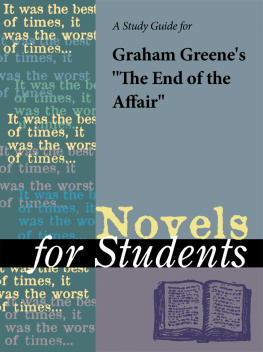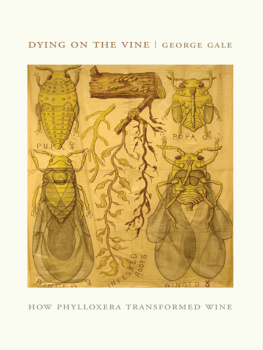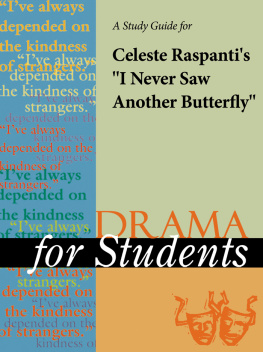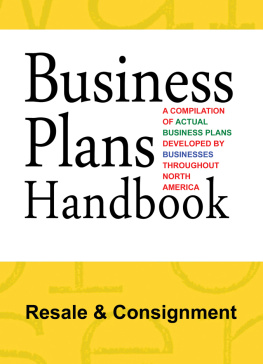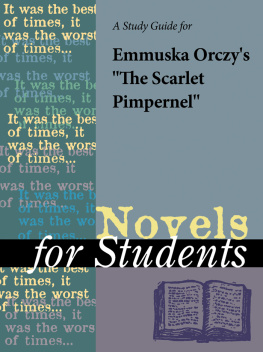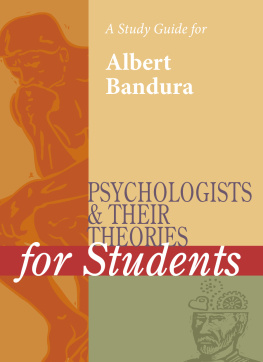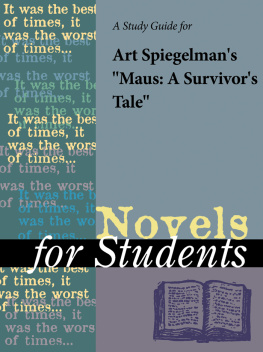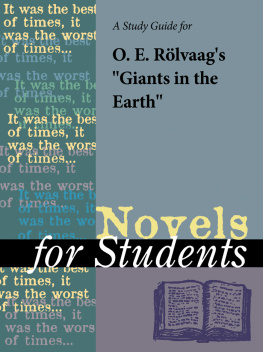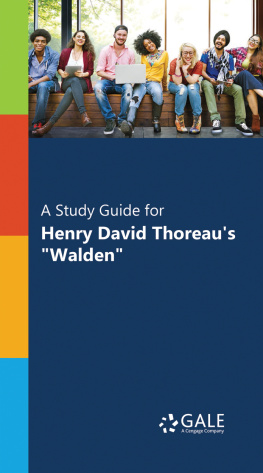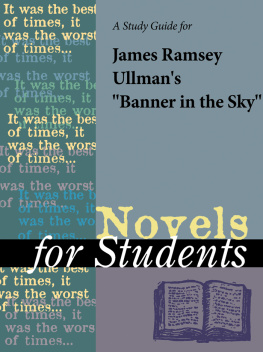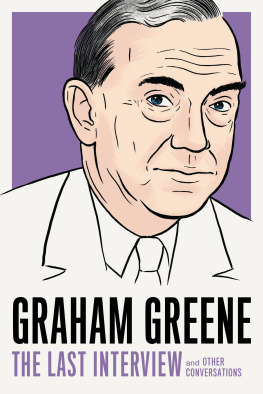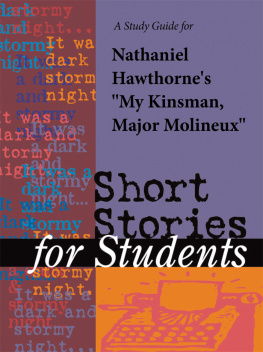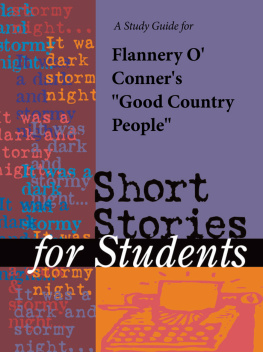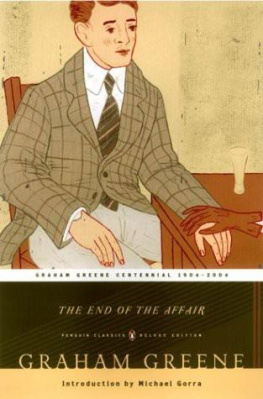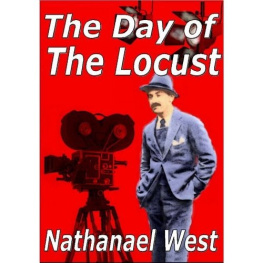TABLE OF CONTENTS
Guide
Novels for Students, Volume 16
Project Editor: David Galens
Editorial: Anne Marie Hacht, Sara Constantakis, Ira Mark Milne, Pam Revitzer, Kathy Sauer, Timothy J. Sisler, Jennifer Smith, Daniel Toronto, Carol Ullmann
Research: Sarah Genik
Permissions: Debra Freitas, Shalice Shah-Caldwell
Manufacturing: Stacy Melson
Imaging and Multimedia: Lezlie Light, Kelly A. Quin, Luke Rademacher
Product Design: Pamela A. E. Galbreath, Michael Logusz
2002 by Gale. Gale is an imprint of The Gale group, Inc., a division of Cengage Learning Inc.
Gale and Design and Cengage Learning are trademarks used herein under license.
For more information, contact
The Gale Group, Inc.
27500 Drake Rd.
Farmington Hills, MI 48331-3535
Or you can visit our Internet site at http://www.gale.com
ALL RIGHTS RESERVED
No part of this work covered by the copyright hereon may be reproduced or used in any form or by any meansgraphic, electronic, or mechanical, including photocopying, recording, taping, Web distribution, or information storage retrieval systemswithout the written permission of the publisher.
For permission to use material from this product, submit your request via Web at http://www.gale-edit.com/permissions, or you may download our Permissions Request form and submit your request by fax or mail to:
Permissions Department
The Gale Group, Inc.
27500 Drake Rd.
Farmington Hills, MI 48331-3535
Permissions Hotline:
248-699-8006 or 800-877-4253, ext. 8006
Since this page cannot legibly accommodate all copyright notices, the acknowledgments constitute an extension of the copyright notice.
While every effort has been made to ensure the reliability of the information presented in this publication, The Gale Group, Inc. does not guarantee the accuracy of the data contained herein. The Gale Group, Inc. accepts no payment for listing; and inclusion in the publication of any organization, agency, institution, publication, service, or individual does not imply endorsement of the editors or publisher. Errors brought to the attention of the publisher and verified to the satisfaction of the publisher will be corrected in future editions.
ISBN 0-7876-4899-X
ISSN 1094-3552
Printed in the United States of America
10 9 8 7 6 5 4 3 2 1
The End of the Affair
Graham Greene
1951
Introduction
Graham Greene's novel The End of the Affair was first published in 1951 in England. The events of the novel concern an adulterous affair in England during World War II. With the war and the affair over, Maurice Bendrix seeks an explanation of why his lover, Sarah Miles, broke off their relationship so suddenly. Greene's contemporaries could relate to the setting of the story, as the war was fresh in their memories and they were living in the same postwar period as the characters. Within this setting, Greene explores themes of love and hate, faithfulness, and the presence of the divine in human lives. Critics have been generally positive in their reviews and analyses of the novel, and readers have embraced it for more than fifty years. One of Greene's early admirers was William Faulkner.
Critics consider The End of the Affair the last in Greene's Catholic tetralogy. In the first three books of the four, Brighton Rock, The Power and the Glory, and The Heart of the Matter, Greene depicts God as a source of grace in people's spiritual lives, but in The End of the Affair, Greene presents a more active, involved God who is a force in people's earthly lives (performing miracles through Sarah, for example). All four novels address the ideas of mortal sin and redemption. To many critics, The End of the Affair is the most obviously Catholic of Greene's novels, due in large part to the apparent sainthood of the heroine, whose death is followed by a series of miracles.
Author Biography
Graham Greene was born in Hertfordshire, England, on October 2, 1904, to Marion Greene (first cousin of the writer Robert Louis Stevenson) and Charles Henry Greene, a school headmaster. An introverted and sensitive child, Greene's had difficult early years because of his strict father and boarding school bullies. At sixteen, Greene suffered a breakdown and went to London for treatment by a student of Sigmund Freud.
While in London, Greene became an avid reader and writer. Before leaving, he met Ezra Pound and Gertrude Stein, who became lifelong literary mentors to him. His other influences were Henry James, Joseph Conrad, and Ford Madox Ford. After graduating from high school in 1922, Greene attended Oxford University's Balliol College, where he received a degree in history in 1925. While at college, Greene became interested in politics, especially Marxist socialism (but not communism). This interest sometimes created tension in Greene's friendship with the conservative writer Evelyn Waugh, although the two remained steady friends for many years.
In 1926, Greene converted to Catholicism for his fiance, Vivien Dayrell Browning, whom he married the following year. The couple eventually had two children. Greene is generally considered a Catholic writer despite his insistence that the conversion was not his greatest literary influence.
During World War II, Greene did intelligence work for the British government in West Africa. His experiences at home and abroad inspired works like The Heart of the Matter (1948). In addition to his novels of intrigue, peopled with spies, criminals, and other colorful characters, Greene wrote short stories, essays, screenplays, autobiographies, and criticism. His literary reputation rests primarily on what are termed his Catholic novels, Brighton Rock (1938), The Power and the Glory (1940), The Heart of the Matter (1948), and The End of the Affair (1951); and his Cold War-era political novels, which include The Quiet American (1955) and The Comedians (1966). Greene is considered one of the most important English writers of the twentieth century, and his honors include consideration for a Nobel Prize. His works are popular with critics and readers, and they have been translated into twenty-seven languages and have sold more than twenty million copies.
Greene died of blood disease in Vevey, Switzerland, on April 3, 1991.
Plot Summary
Books 1-2
As The End of the Affair opens, the narrator, Maurice Bendrix (called simply "Bendrix" by his friends) explains that he is a writer and thus is in control of the story he is about to tell. Although it is a true story, he determines how much of it he will tellat what point he will begin his tale and at what point he will end it. He begins with the night he encounters Henry Miles, the husband of a woman with whom Bendrix had an affair in the recent past. Henry has no idea that Bendrix was once involved with his wife. The two men go to a bar to get out of the rain, and Henry reveals that he thinks Sarah (his wife) is seeing another man. Pretending to be a friend to Henry, Bendrix offers to secure a private investigator to find out the truth. In reality, Bendrix is jealous and wants to know for his own reasons if Sarah is seeing someone. Bendrix's affair with Sarah ended suddenly, and he is tormented by the breakup and longs to know why she ended the relationship. When Bendrix is talking to Henry, he mentions that a demon encourages him to be deceptive and false in pretending to be Henry's friend so that he can find out about Sarah. At various points throughout the novel, Bendrix mentions this demon, which represents his hate and selfishness.

